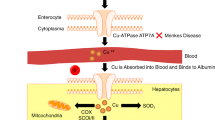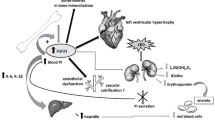Summary
Vit-D-Dependent calcium binding protein and parvalbumin have both been detected in ameloblasts and calcified cartilage by immunohistochemical techniques. These two Ca2+ binding proteins may play a crucial role in the local accumulation of Ca+2 ions during the process of mineralization.
The mechanisms underlying the deposition of inorganic substances in bone and teeth during physiologic calcification are still the object of intense debate [1,2]. The hypotheses concerning the factors controlling the initiation of mineralization can be subdivided into three large categories: enzymatic (or non-enzymatic) local elevation of phosphate and calcium [3,4,5,6,7], enzymatic removal of inhibitors of calcification [8] and direct nucleation of CaPO4 crystals on collagen fibrils [9].
In support of the first line of thought we report here the simultaneous occurrence of two different very high affinity Ca2+ binding proteins [vitamin-D-dependent CaBP=VD CaBP and parvalbumin=PV] in bones and teeth. During the studied age period and with immunohistochemical methods, we detected the proteins only in calcified cartilage of bones and in ameloblasts of teeth. We propose that VDCaBP and PV help increase the Ca2+ concentration at the calcification front in some regions involved in mineral deposition.
Similar content being viewed by others
References
H.C. Anderson (1980): Calcification processes. Pathol. Annal. 15, 45–75.
Bonucci, E. (1981): Calcifiable matrices. In: Connective Tissue Research: Chemistry, Biology and Physiology. 113–123. Alan R. Liss Inc. NY.
J.J. Vogel, Boyan-Salyers, B., Campbell, M.M. (1978): Protein-phospholipid interactions in biologic calcification. Rehab. Bone Dis. and Rel. Res. 1, 149–153.
Robison, R. (1926): The significance of phosphoric esters in metabolism. New York Univ. Press, 1982, N.Y.
Irving, J.T., Wuthier, R.E. (1968): Histochemistry and biochemistry of calcification with special reference to the role of lipids. Clin. Orthoped. Rel. Res. 56, 237–248.
Weinstock, M., Leblond, G.P. (1973): Radioautographical visualization of the deposition of a phosphoprotein at the mineralization front in dentin of the rat incisor. Cell Biol. 56, 838–857.
Gallopp, P.M., Lian, J.B., Hauschka, P.V. (1980): Carboxylated calcium binding proteins and vitamin K. New England J. Med. 302, 26, 1460–1466.
Fleisch, J., Neuman, W.F. (1961): Mechanisms of calcification. Role of collagen, polyphosphates and phosphatase. Am. J. Physiol. 200, 1296.
Strates, B., Neumann, W.F. (1958): On the mechanisms of calcification. Proc. Soc. Exp. Biol. (N.Y.) 97, 688–691.
Celio, M.R., Heizmann, C.W. (1982): Calcium binding protein parvalbumin is associated with fast contracting muscle fibers. Nature 297, 504–506.
Celio, M.R., Heizmann, C.W. (1981): Calcium binding protein parvalbumin as a neuronal marker. Nature 293, 300–302.
Christakos, S., Friedlander, E.J., Frandsen, B.R. and Norman, A.W. (1979): Studies on the mode of action of calciferol XVII. Development of a radioimmunoassay for vitamin-D-dependent chick intestinal calcium binding protein and tissue distribution. Endocrinology 104, 1495–1503.
Roth, J., Bonner-Weir, S., Norman, A.W. and Orci, L. (1982): Immunocytochemistry of vitamin-D-dependent calcium binding protein in chick pancreas: exclusive localization in B-cells. Endocrinology 111, 2216–2218.
Christakos, S., Norman, A.W. (1975): Vitamin D3-induced calcium binding protein in bone tissue. Science 202, 70–71.
Author information
Authors and Affiliations
Rights and permissions
About this article
Cite this article
Celio, M.R., Norman, A.W. & Heizmann, C.W. Vitamin-D-dependent calcium-binding-protein and parvalbumin occur in bones and teeth. Calcif Tissue Int 36, 129–130 (1984). https://doi.org/10.1007/BF02405306
Issue Date:
DOI: https://doi.org/10.1007/BF02405306




